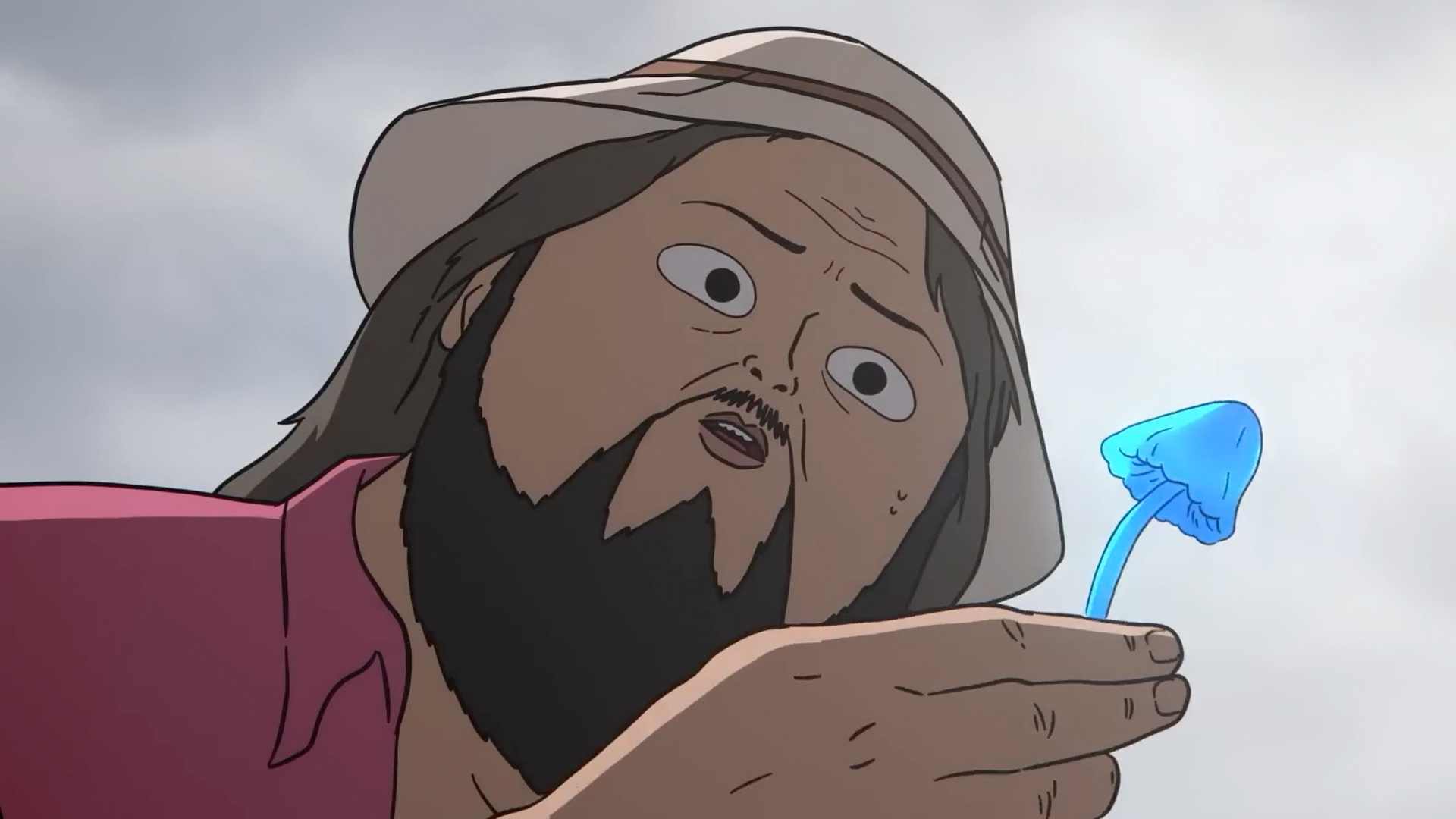The season 1 finale of Common Side Effects, titled “Raid,” concludes the first chapter of this Adult Swim conspiracy thriller while leaving several storylines on cliffhangers that set up a potential second season. The show revolves around the discovery of the Blue Angel Mushroom, a rare fungus capable of miraculous healing, even reversing death in some instances.
Main characters Marshall and Frances wrestle with the moral, ethical, and personal consequences of using and distributing this medical marvel. Their journey is complicated by external pressures, including the FBI, pharmaceutical companies, and other factions aiming to control or suppress knowledge of the mushroom, which could disrupt societal and corporate hierarchies.
The finale brings Marshall and Frances back together after a season of tension and separation. Former classmates reunited by circumstance, they navigate their complicated personal and professional relationship while on the run. Frances, initially allied with Rick and at odds with Marshall, is guided back to him by her conscience.
The season ends with the pair fleeing from authorities, hand in hand, hinting at the potential development of a romantic bond. Marshall’s repeated brushes with death, countered by the mushroom’s healing properties, underscore both the stakes and the wonder surrounding the Blue Angel Mushroom, while the shared visions provided by the fungus bring the duo closer.

DEA Agents, Rick, and Hildy Create Complex Threats Driving Season Two Storylines
DEA Agents Copano and Harrington feature prominently in a subplot that grows increasingly complex by the finale. While initially aligned as friends investigating Marshall, they diverge in approach: Copano grows skeptical of the government’s and Reutical’s motives, while Harrington remains integrated into official operations.
During the climactic raid, Copano is seriously injured while saving Marshall from Hildy’s deadly intentions. Harrington intervenes, giving Copano a Blue Angel Mushroom, highlighting her wavering loyalty and moral ambiguity. The season closes on an ambiguous note for both characters: Copano awakens in a hospital, poised to continue probing the conspiracy, while Harrington rides into the desert, her intentions toward Marshall left unclear.
Rick, the usually comedic and inept CEO of Reutical, is positioned as a more prominent antagonist for season 2. Initially overshadowed by the more ruthless Jonas Backstein, Rick gains significance after Backstein is incapacitated due to overconsumption of the mushroom.
Rick’s collaboration with Frances results in a refined mushroom-based additive that quickly achieves commercial success, though it may retain the fungus’s mind-altering properties. This development expands the series’ critique of big pharma while potentially increasing the stakes, as Rick could use the additive to assert influence over public consumption, blending comedy with darker societal satire.
Hildy, Marshall’s former teacher, remains a shadowy and unpredictable figure. Initially portrayed as eccentric but helpful, her ruthless pursuit of control over the mushroom emerges as a central threat. She attempts to kill Marshall multiple times, only to be thwarted by Copano, and her plans conclude the season with her seemingly experimenting on a larger scale by dumping mushroom concentrate into a town’s water supply.
Her motivations, whether to wield the mushroom as a weapon, a psychedelic, or a cure, remain enigmatic, making her one of the most dangerous and compelling characters. Hildy embodies the show’s recurring theme: how human ambition can corrupt even miraculous discoveries.

Supporting Characters’ Fates Hint at Complex Alliances and Conflicts for Season Two
The finale also addresses the fates of the broader supporting cast, setting the stage for continued intrigue in season 2. Frances’ colleague Kiki appears aligned with Rick, while Zane succeeds in advancing the cultivation of turtles crucial for mushroom growth. Backstein may be incapacitated, but his allies, including Cecily, remain a threat to Marshall.
Amelia and her son Wyatt evade arrest, positioning them as key players whose divided loyalties between Marshall and Hildy could drive future conflicts. Additionally, the mysterious Humanoids, whose impact on human perception remains largely unexplained, continue to hint at larger, more enigmatic forces at work.
Despite its thrilling plot and conspiracy-driven narrative, Common Side Effects underscores the importance of empathy, restraint, and humanity in scientific discovery. Characters who act selflessly or with compassion, Copano saving Marshall, Amelia protecting her son, and Frances finding her way back to Marshall, are rewarded.
Conversely, villains driven by greed, power, or control over the mushroom bring chaos and suffering. The series’ finale reinforces that technological or medical breakthroughs cannot replace the moral and ethical responsibility of those who wield them, leaving a philosophical core that enriches the suspenseful narrative.
The season 1 finale of Common Side Effects resolves some immediate plotlines while leaving key questions unanswered, creating anticipation for the next season. Marshall and Frances’ partnership, potentially romantic, survives amidst a backdrop of law enforcement, corporate greed, and morally ambiguous characters.
Rick’s rise, Hildy’s unpredictable schemes, and the mysterious mushroom-based Humanoids all promise further tension. Through these intertwined storylines, the show balances dark comedy, social critique, and thrilling science fiction, emphasizing that empathy and moral responsibility are vital even in a world of miraculous medical discoveries. Season 2 promises to expand these themes while deepening character arcs and conflicts.



